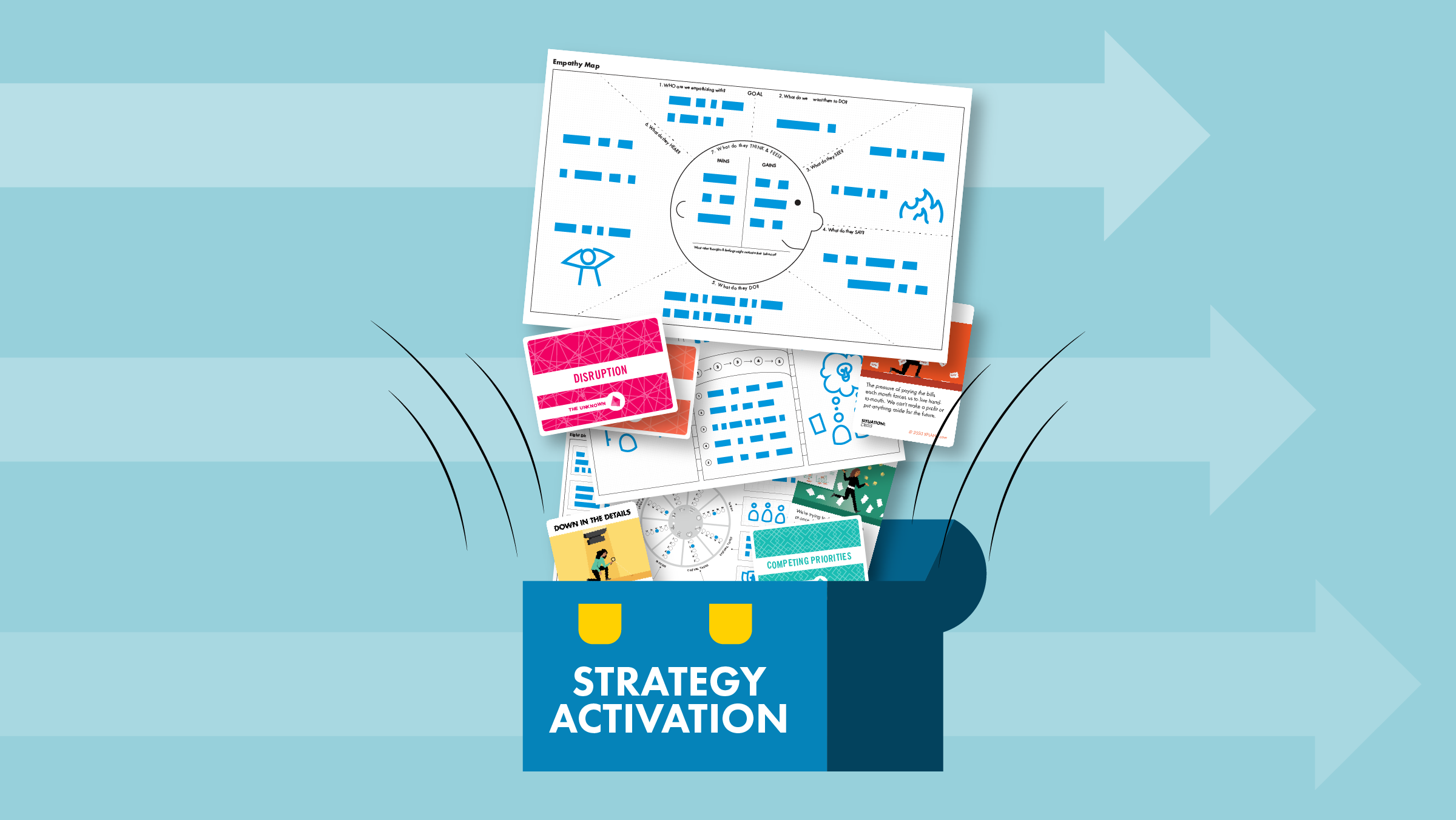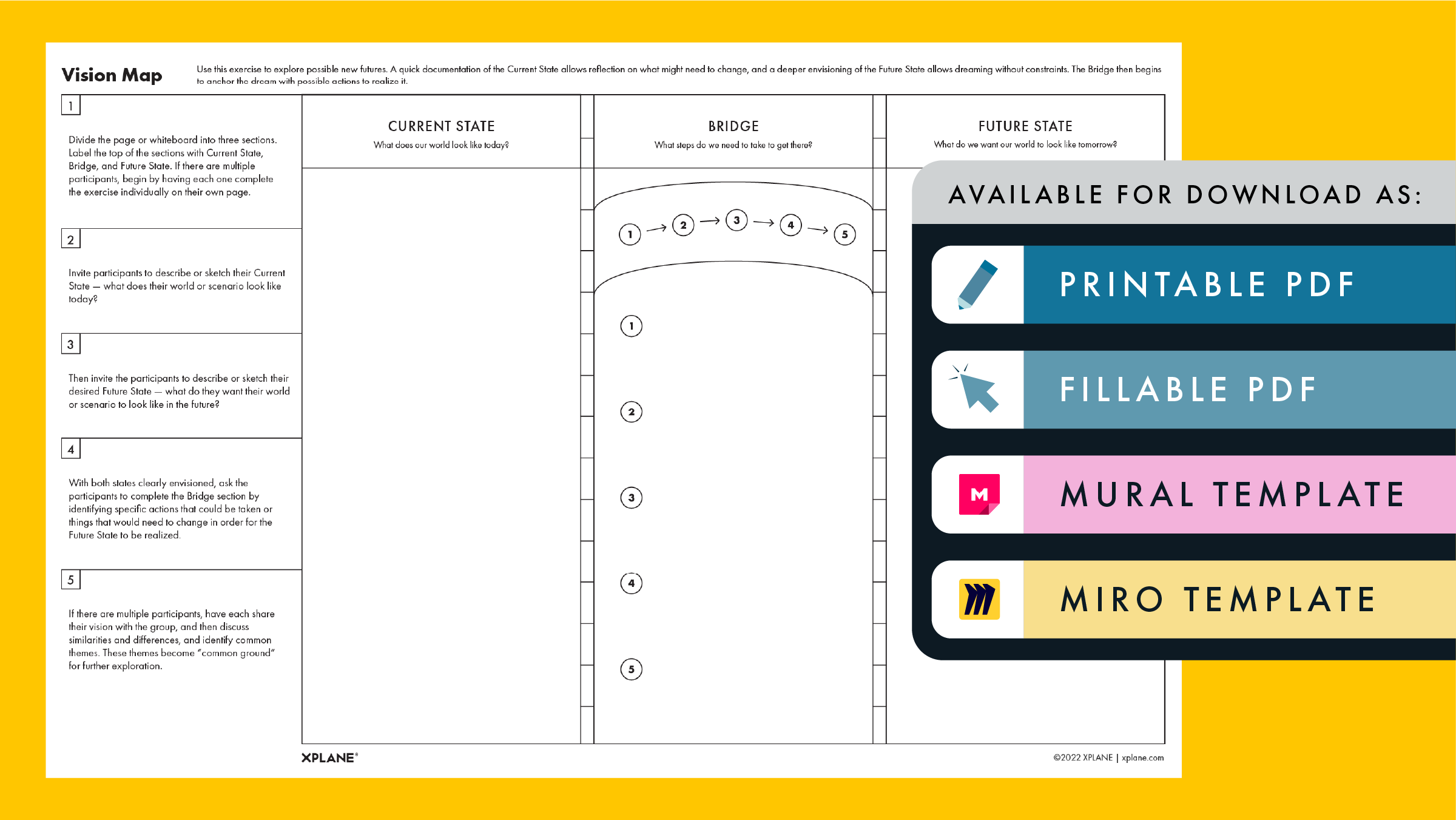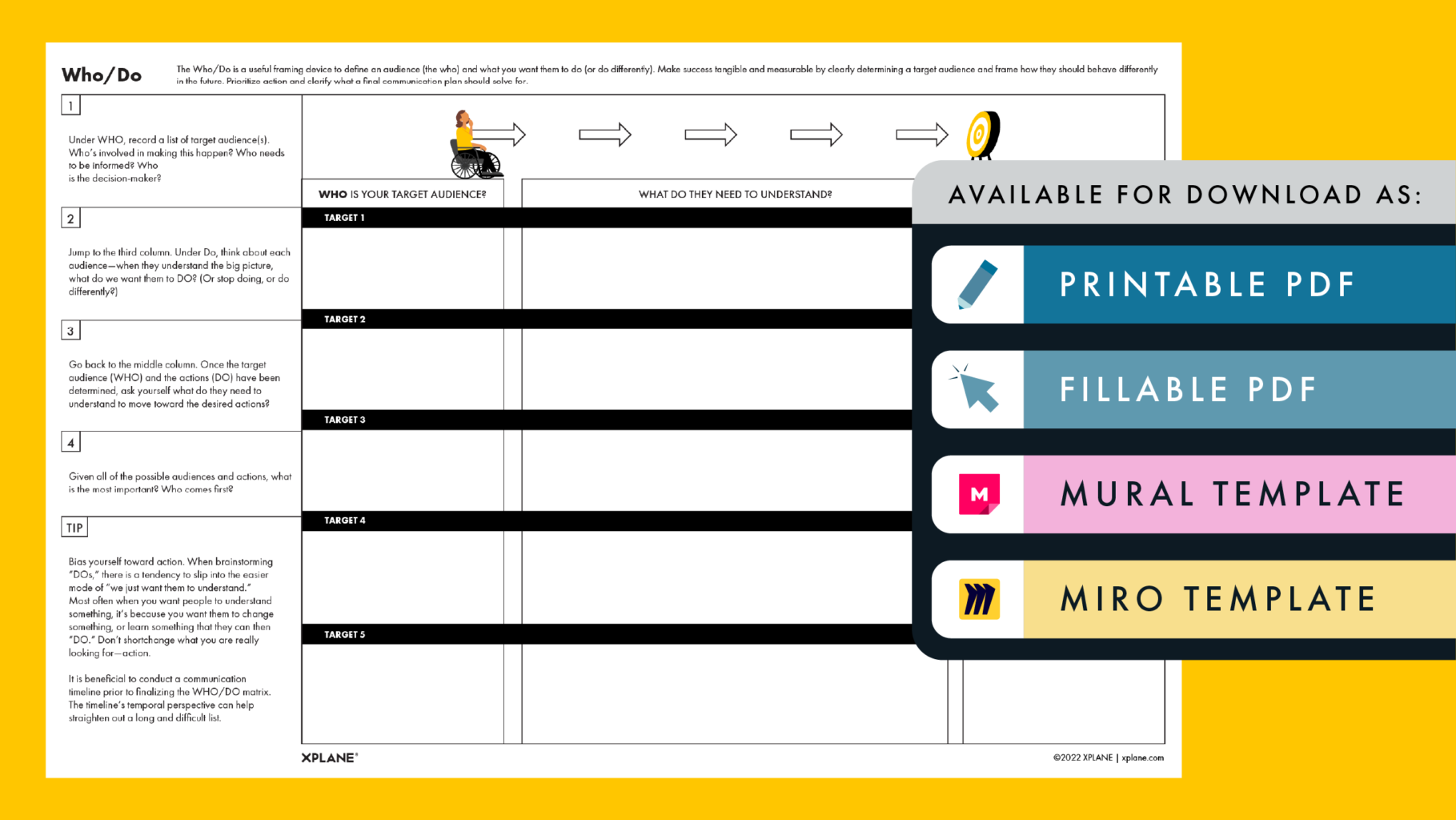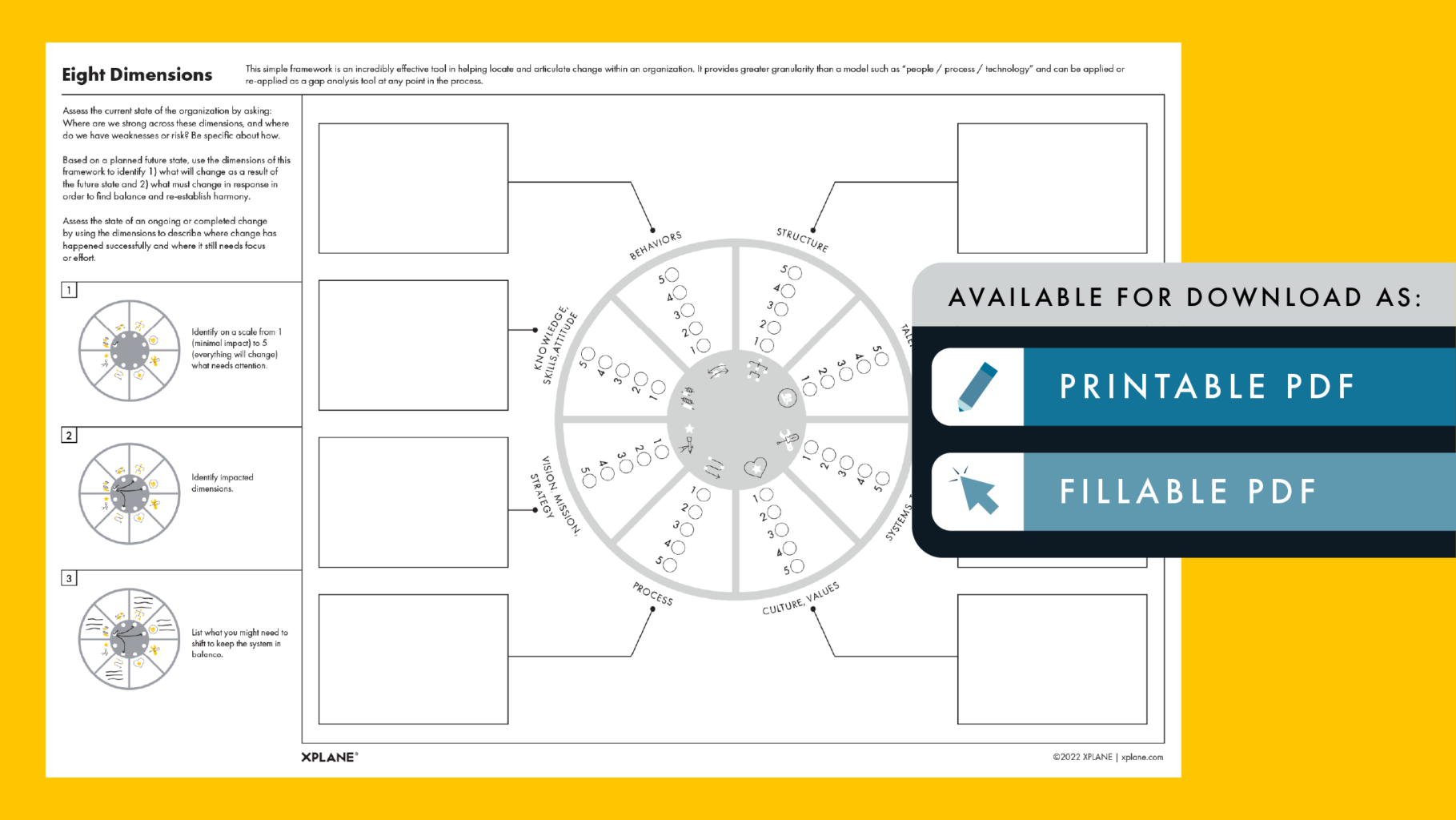Among change leaders, it’s a truth universally acknowledged that 80% of major corporate strategies fail. But with the right tools to get people onboard with change, bust through roadblocks, and create resilience, you can make change happen.
In this new book, The Strategy Activation Playbook, we share top techniques, worksheets, and best practices for leaders eager to accelerate change and take their strategy all the way to the finish line.
This post is an excerpt from “Essential Tools for Your Strategy Activation Journey: An Introduction to the Strategy Activation Playbook,“ the second of a two-part webinar series. You can view the on-demand webinar here and learn more about The Strategy Activation Playbook here.
To view or read about Part 1 of this series, “A Human-Centered Approach to Bring Your Strategy to Life: An Introduction to the Strategy Activation Playbook,” download the webinar recording or read our blog post “How to Engage People and Bring Your Strategy to Life.”
Not all Olympians medal, nor do all corporate strategies succeed.
Most strategies, like most Olympians, are prepared to go the distance. Yet 80% of corporate strategies fail because they lack a game plan to get them to the finish line.
Fortunately, you can leverage change activation methodology, core tools, and best practices to significantly increase your chances of seeing your strategy succeed.
Key Principles of Successful Organizational Change
Before we delve into practical ways to move strategy forward, let’s review a few tenets of successful organizational change, which we covered in Part 1 of this webinar series:
- Change cannot be forced from the top but must be an authentic movement from within. For strategy to succeed, people must feel compelled to join a change movement.
- The four phases of strategy activation—envision, discovery, design, and execution—lay the foundation for a successful change initiative.
- The activation curve shows how people take in new information, as they move from hearing to believing to living a change.
These principles are foundational to leveraging the tools and methodologies that can help you successfully launch—and see through—your change initiative.
Seven Powerful Tools to Make Your Strategy Stick
At XPLANE, we organize client change programs around the four phases of strategy activation.
While there’s a myriad of best practices and ways of working that can activate change, these are our go-to tools, which you can accordion up or down based on the unique circumstances of your organization.
Envision: Clarify Your Vision and Measure Success
If we want to get people onboard with change, we need to tell a story about a better future for everyone.
In this phase, we need to develop a clear vision of where we’re going and identify measures that tell us when we’ve arrived. Two tools help us accomplish this.
Tool #1: Vision Map
Unlike a strategy, which is a plan to get to a place, a vision is a description of the place. A vision helps us see a future state and hopefully persuade others that it’s better.
A vision map helps you build a narrative about where you’re going.
In vision mapping, you begin by identifying your current state, and then you describe the future state—what you’d like to see 5 years from now.
Using the current state and the future state as endpoints, you then build a bridge by identifying the steps you’ll take to get from Point A to Point B.
Vision mapping can be a powerful tool to start to develop a common narrative that everyone can share and understand.
Tool #2: Measurement System Worksheet
Whether you want your net promoter score to go up or employee engagement to increase, you’ll need to set milestones to measure your progress.
The Measurement System Worksheet will help you identify (1) quantitative and qualitative measures that will define success and (2) steps you need to take to ensure you can collect and report this data.
Discovery: Identify and Plan Around Barriers to Change
When you understand stakeholder wants and needs, you can make plans to meet those needs, avoid barriers, and move your strategy forward.
In this phase, we look at change through three lenses:
Stakeholders. We want to identify stakeholders and understand how they feel about the change. Keep in mind stakeholder opinions can vary—some people will support change; others may feel threatened by it.
The organization. We need to assess the organization’s capacity for change. Can your organization adapt quickly, or is it more entrenched and traditional?
The outside environment. Finally, what is happening in the outside environment? What factors—such as market conditions or weather impacts—do you need to anticipate and mitigate?
Tool #3: Who Do Worksheet
The Who Do Worksheet will help you identify key stakeholders, what they need to understand, and what you want them to do to move strategy forward.
This tool helps you discover where and how you can get people to join your change initiative.
Tool #4: Eight Dimensions Worksheet
The Eight Dimensions Worksheet breaks down your organization into its behaviors, structure, talent, systems, culture, process, vision/mission, and knowledge/skills/attitude.
This worksheet helps you understand how your change will affect your organization and what might need to shift—processes, behaviors, skills—to support the change.
Tool #5: Force Field Analysis Worksheet
The Force Field Analysis Worksheet helps you identify outside forces that will either support or work against the change you want to make.
This exercise helps you clarify risks you need to mitigate and opportunities you might harness to support your strategy activation journey.
Design: Create an Activation Plan
An activation plan details how you will bring your change to life.
It identifies the communications, learning tools, job aids, or events that will answer stakeholder questions, meet their wants and needs, and avoid obstacles so you can reach your goal.
Tool #6: Activation Roadmap
The Activation Roadmap helps you lay out an activation campaign (much like a marketing campaign) tailored to the needs of your various stakeholders.
Your activation plan moves each stakeholder group up the activation curve, from hearing to believing to ultimately living the change.
Your roadmap isn’t one-size-fits-all. Some stakeholders will be advocates and ambassadors willing to plant the seeds of change in the organization, while others will need more support to get behind the change.
This latter group might need interventions (called “building blocks”) such as training designed to equip them to effect change.
In this phase, you will be working to entrench and embed the change you wish to see—and celebrating successes along the way.
Execute: Ensure Ongoing Success
Execution is not just about doing. For strategy to succeed, we recommend you create a governance model to ensure someone is steering the ship and initiating course corrections.
In this phase, you’ll also want to put measurements in place to know what’s working and what’s not, so you can adapt your plans as needed.
Remember, few journeys are a straight line. You want to build in resilience by so you can constantly sense, respond to, and refine your plan to stay on course.
Tool #7: Governance Planning Worksheet
The governance planning worksheet helps you identify the people who will lead and support your governance program, when the team will meet, their standing agenda, and so on.
Your governance team can comprise a few people or a large committee. By putting this group and structure in place, you can further enable the success of your strategy over time—and maximize all the work you put in to getting your strategy across that finish line.
Want to learn more about tools you can use to move your strategy forward? The Strategy Activation Playbook: A Practical Approach to Bringing Your Strategies to Life is filled with tips and techniques that you’ll refer to again and again as you initiate change in your organization.
Purchase your copy from the XPLANE shop today!
Additional Resources
- Explore our free downloadable tools featured in this post and in The Strategy Activation Playbook.
- In XPLANE’s Strategy Activation course, apply key learnings from the playbook in real time and get live instruction.
- For added inspiration, tips, and techniques, we invite you to browse our extensive library of strategy activation blog posts.




